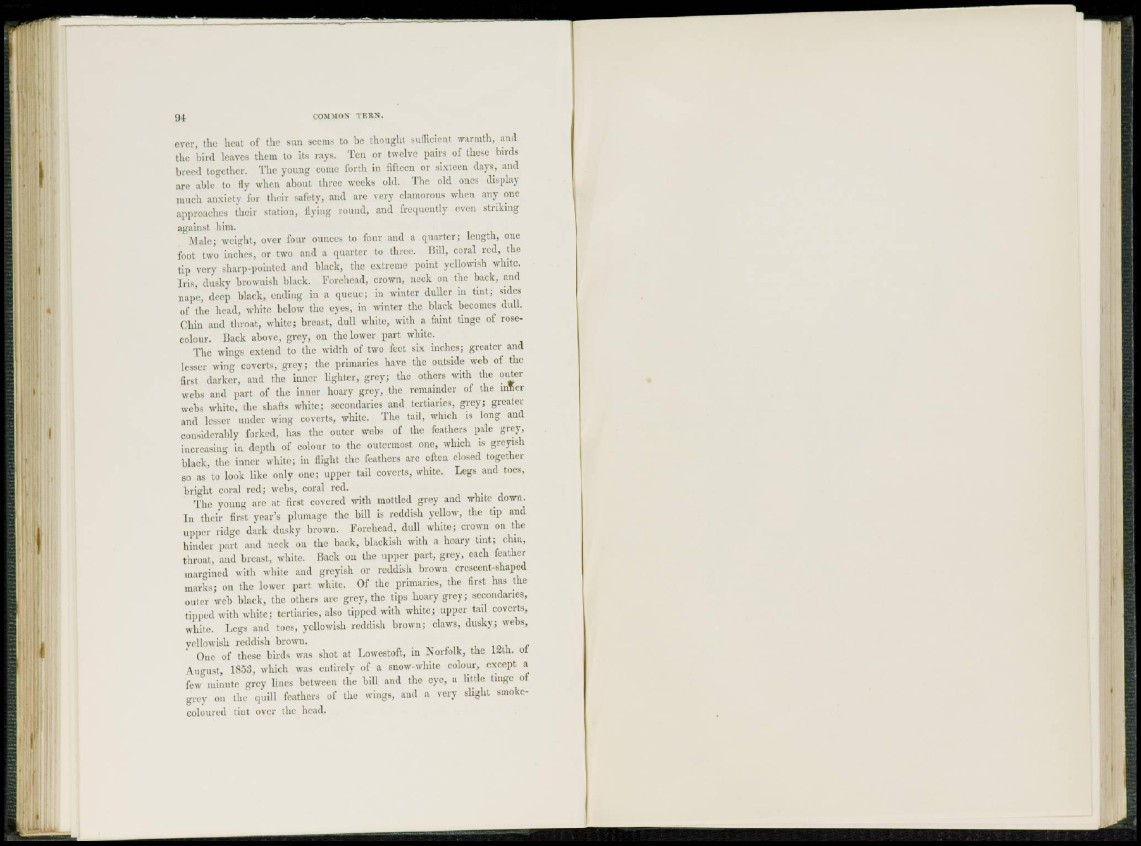
ever, the heat of the sun seems to be thought sufficient warmth, and
the bird leaves them to its rays. Ten or twelve pairs of these birds
breed together. The young come forth in fifteen or sixteen days, and
arc able to Hy when about three weeks old. The old ones display
much anxiety for their safety, and are very clamorous when any one
approaches their station, flying round, and frequently even striking
against him.
Male; weight, over four ounces to four and a quarter; length, one
foot two inches, or two and a quarter to three. Bill, coral red, the
tip very sharp-pointed and black, the extreme point yellowish white.
I r i s , dusky brownish black. Forehead, crown, neck on the back, and
nape, deep black, ending in a queue; in winter duller in tint; sides
of the head, white below (he eyes, in winter the black becomes dull,
(.'bin and throat, white; breast, dull white, with a faint tinge of rosecolour.
Back above, grey, on the lower part white.
The wings extend to the width of two feet six inches; greater and
lesser wing coverts, grey; the primaries have the outside web of the
first darker, and the inner lighter, grey; the others with the outer
webs and part of the inner hoary grey, the remainder of the infier
webs white, the shafts white; secondaries and tcrtiaries, grey; greater
and lesser under wing coverts, white. The tail, which is long and
considerably forked, has the outer webs of the feathers pale grey,
increasing in depth of colour to the outermost one, which is greyish
black, the inner white; in flight the feathers arc often closed together
so as to look like only one; upper tail coverts, white. Legs aud toes,
bright coral red; webs, coral red.
The young arc at first covered with mottled grey and white down.
In their first year's plumage the bill is reddish yellow, the tip and
upper ridge dark dusky brown. Forehead, dull white; crown on the
hinder part and neck on the back, blackish with a hoary tint; chin,
throat, and breast, white. Back on the upper part, grey, each feather
margined with white and greyish or reddish brown crescent-shaped
marks; on the lower part white. Of the primaries, the first has the
outer web black, the others are grey, the tips hoary grey; secondaries,
tipped with white; tcrtiaries, also tipped with white; upper tail coverts,
white. Legs and toes, yellowish reddish brown; claws, dusky; webs,
yellowish reddish brown.
One of these birds was shot at Lowestoft, in Norfolk, the 12th. of
August, 1853, which was entirely of a snow-white colour, except a
few minute grey lines between the bill and the eve, a little tinge of
grey on the quill feathers of the wings, and a very slight smokecoloured
tint over the head.